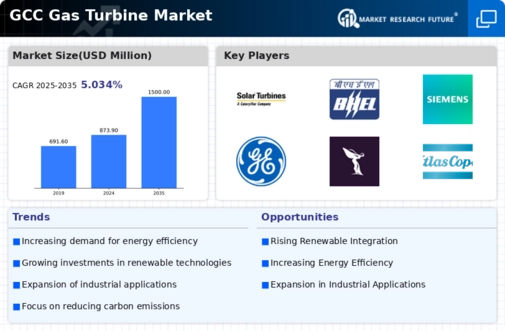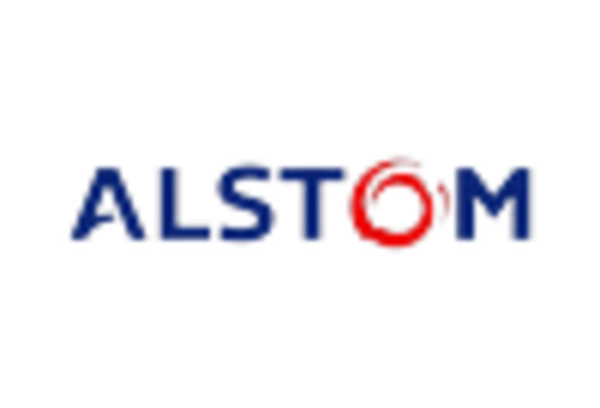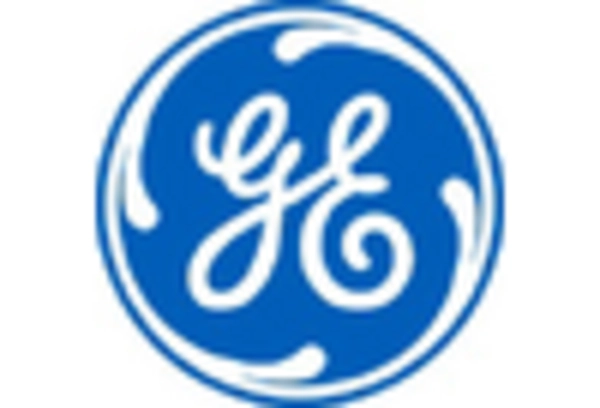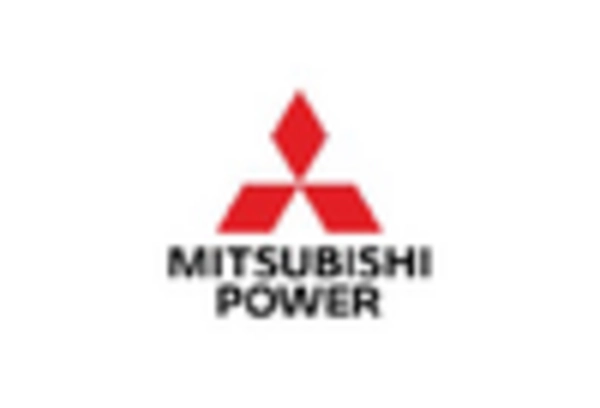Rising Energy Demand
The gas turbine market is experiencing a notable surge in demand driven by the increasing energy requirements across various sectors in the GCC. As urbanization and industrialization continue to expand, the need for reliable and efficient power generation becomes paramount. The GCC region's energy consumption is projected to grow at a rate of approximately 3.5% annually, necessitating the deployment of advanced gas turbine technologies. This growth is further fueled by the region's commitment to diversifying its energy mix, which includes a significant reliance on natural gas. Consequently, the gas turbine market is poised to benefit from this rising energy demand, as gas turbines offer a flexible and efficient solution for meeting the power needs of both residential and industrial consumers.
Technological Advancements
Technological advancements are significantly influencing the gas turbine market, particularly in the GCC region. Innovations in turbine design, materials, and control systems are enhancing the efficiency and performance of gas turbines. For example, the introduction of combined cycle gas turbine (CCGT) systems has improved overall efficiency rates to over 60%, making them a preferred choice for power generation. Furthermore, advancements in digital technologies, such as predictive maintenance and real-time monitoring, are optimizing operational efficiency and reducing downtime. As these technologies continue to evolve, the gas turbine market is likely to witness increased adoption of high-efficiency turbines, which can provide substantial cost savings and environmental benefits.
Government Initiatives and Policies
Government initiatives in the GCC are playing a crucial role in shaping the gas turbine market. Various national strategies aim to enhance energy security and promote sustainable development. For instance, the UAE's Energy Strategy 2050 emphasizes the importance of clean energy and aims to increase the contribution of clean energy sources to 50% of the total energy mix. Such policies not only encourage investments in gas turbine technologies but also create a favorable regulatory environment for market players. The gas turbine market will see increased activity as governments incentivize the adoption of advanced technologies that align with their long-term energy goals. This proactive approach is expected to stimulate innovation and drive growth within the gas turbine market.
Focus on Environmental Sustainability
The gas turbine market is increasingly influenced by the focus on environmental sustainability within the GCC. As countries in the region strive to reduce their carbon footprints and comply with international environmental agreements, there is a growing emphasis on cleaner energy solutions. Gas turbines, known for their lower emissions compared to traditional coal-fired plants, are becoming a preferred option for power generation. The GCC's commitment to reducing greenhouse gas emissions by 30% by 2030 further underscores the importance of adopting cleaner technologies. This shift towards sustainability is likely to drive investments in the gas turbine market, as stakeholders seek to align with environmental goals while ensuring reliable energy supply.
Investment in Infrastructure Development
The gas turbine market is benefiting from substantial investments in infrastructure development across the GCC. Governments are prioritizing the expansion of power generation capacity to support economic growth and meet the rising energy demands. Major projects, such as the construction of new power plants and the upgrading of existing facilities, are underway, with investments reaching billions of $ in the coming years. This infrastructure development is expected to create a robust demand for gas turbines, as they are integral to modern power generation systems. The gas turbine market is likely to see increased competition among manufacturers as they strive to provide innovative solutions that meet the evolving needs of the region's energy landscape.

















Leave a Comment